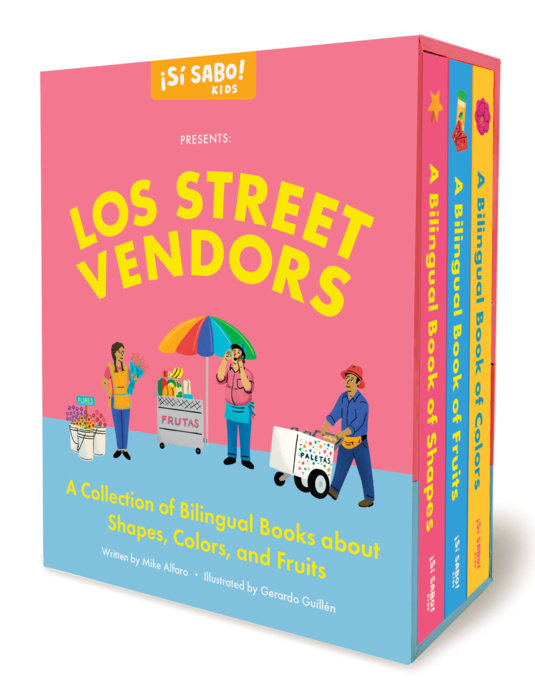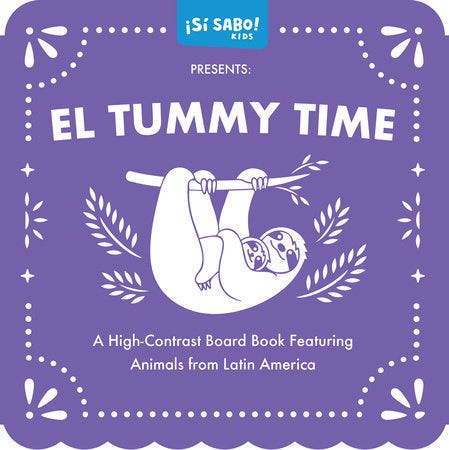“I wanted to make something that really captures what it is like to grow up switching between English and Spanish in the United States.”
Mike Alfaro on creating Millenial Loteria and the need for Si Sabo Kids
Reflecting on his work across multiple projects, creative director and writer Mike Alfaro emphasized a personal connection to the things he creates, “There weren’t products like this for young Latinos that showed us in a modern, cool, smart, funny way.” From his smash hit game, Millennial Lotería, to his recent publishing line, Si Sabo Kids, Alfaro has been highlighting Latino culture for young people across the globe. In this first part of our conversation with, Mike shares the origins of some of his ideas and how his Guatemalan heritage has helped him translate ideas for an audience of millions.
Antero Garcia: Can you start by explaining what you do and what your work looks like?
Mike Alfaro: Well, it depends. I think I can easily start with my major. I came to the United States in 2006, and I studied public relations and advertising with a minor in television at Chapman University in Orange County. My career path went into advertising. So originally, I was a copywriter. I wrote a lot of stuff for television, for commercials, different clients. I worked with big brands like Taco Bell, Honda. And I rose through the ranks in advertising to become a creative director.
A creative director is someone who is in charge of the creative visions for a brand or a product or anything like that. And so I did anything that had to do with the brand, whether it's a billboard, or a full-on commercial, radio, digital ads, print ads, banners, experiential things, in store events, whatever you need to make sure that a consumer understands a brand, I was the one who had final say. I was the one who was pushing ideas. That's basically what a creative director in my industry means.
On the side, I was doing TikTok, Instagram, social media, and that started to blow up. I left my job in 2021 or early 2022, because I created Millennial Lotería, just on a whim that I had.
AG: Wow, that really worked out as something that was on a whim!
MA: Yeah. I had quit my job, so let me go back a little bit. I had been going through an H1B visa process through work. Once I got my green card, I ended up being like, I don't need to be attached to a company to sponsor my visa. I can just do what I want. So I was like, "I'm going to quit my job and I'm just going to freelance for a while and just focus on me." And so I quit my job, and it was about a month or two in when I had the time. I was visiting Guatemala, and I ended up creating Millennial Lotería as something to express myself. I put it online on social media, and it blew up.
Once I got my green card, I ended up being like, I don't need to be attached to a company to sponsor my visa. I can just do what I want … I ended up creating Millennial Lotería as something to express myself.
People really connected: "Can you make this a game?" And I was like, "I don't know how to make a game. Let me just figure it out." So there was a lot of support for Millennial Lotería and a lot of want. I saw a need in the market. There weren’t products like this for young Latinos that showed us in a modern, cool, smart, funny way. And so I was like, well, there's a real need for this. People are begging me to make this game. They want it. So I had to figure out how to make it. But at the same time, my job that I had quit called me back, and they were like, "We'd love for you to come back and work for us again." And I was like, "Oh, I don't know if I can do it," but the pay was really good … So I started to do both.
[laughs]
That was in 2017, so it was 2018, 2019, 2020, 2021. And then I left. I stayed another four years there.
I ended up leaving the agency and focused full time on Millennial Lotería, on Si Sabo Kids, this new venture now that I'm a dad as a writer, and again, as a creative director, because I touch everything that comes with a brand, whether it's the book branding, social media, any ads that we do. I'm making sure that the vision is clear and there's always a message that really connects with people.
Alix Dick: You recently published Los Street Vendors, which is the cutest. I love the books so much. You also have a bilingual word library coming out. How did you come up with all of this?
MA: Now that I have a baby, I want to make books and things that teach her Spanish and also English at the same time, because I want to raise her bilingual. She's growing up in the United States. I want her to be raised with both of those options, not just one. And so I wanted to make stuff that was for her, and I realized, you know what? There's a bigger need out there for stuff like this. With a lot of books that are bilingual, it's just a translation. I wanted to make something that really captures what it is like to grow up switching between English and Spanish in the United States. If you see my books and you read them, they start out in English as the dominant language and Spanish as the second language.
And as you go through, it switches where Spanish becomes the dominant language, and English becomes the sort of second language to really encourage that code switching that happens with a lot of us that are bilingual. So that you can go back and forth. And so I think that was something that's different from our books than other ones. As my baby grows up, I want to create books that grow with her. That's where the bilingual library is coming in. There are some books that I wanted to come out earlier. We have a tummy time book that's coming out later on in the year for younger kids, but we couldn't put it out around the time my baby was born.
PULL: As my baby grows up, I want to create books that grow with her.
AD: Maybe you’ll have more children by that time.
MA: Maybe for another baby or my friends' babies. It's one of those things where at that time I was looking at different tummy time books and I was like, "I wish there was something that was different out there." There’s where a lot of my ideas come from. I want to make sure that we're providing options. Parents are buying these books for their kids. And so I always want to make sure that there's a component that makes the parents feel comfortable that this is a book for Latinos, but also there are a lot of Latinos out there who did not speak Spanish growing up, that are now older, who want their children to learn Spanish.
And so I wanted to make these books accessible to people who maybe are like, "Oh, my parents didn't teach me Spanish. How am I going to teach my daughter Spanish or my son Spanish?" I think these books are made so that even if you don't know any Spanish, you can teach your baby. Everything we make comes with a pronunciation guide in the back that helps parents who don't know Spanish, really phonetically sound out what a certain word should sound like so that they can teach it correctly to their children. So they're not saying ‘row-joe,’ they're saying rojo.
AD: I love that.
AG: How has your daughter responded to the books? Is she your harshest critic?
MA: No, she loves them. I never want to force Spanish, force someone to learn another language. I think kids rebel against that a little bit. I just wanted to create books that are naturally colorful, naturally drawing them in. All our books do not have that beige, monochromatic look, that's all the rage I think with different parents. I'm really about colors and vibrantness that's part of our culture, that's part of Latinos. I wanted to really bring that forward. And I've seen not just my child, but other children gravitate towards these books because they are colorful, they are bright, and they're also very well-designed in a way that is aesthetically pleasing.
I think there's this idea that in order to appeal to millennials, you have to be very bland and white and crisp. But you can appeal with colors and images and fun. And so that's what I wanted to do. But she's been learning a lot of words now from everything. All the fruits that I do from a paletero or like sandia.
Parents really are the ones who are driving this conversation. My wife speaks English, I speak Spanish, so sometimes English becomes a dominant language where I'm just talking like regularly and these books help me remember, "Oh no, go back to Spanish or introduce little Spanish words." And it helps my wife too know certain words to teach her. She's a year and eight months now. I'm really seeing how at this very early age, they can still grasp this idea that things are called different things in different languages, even at an early age.
When you're teaching really early on, you start to see that those things start to stick. She's saying words, but she's not fully speaking yet. She's saying, "Mama, Papa." She says “agua” when she wants water.
I think there's this idea that in order to appeal to millennials, you have to be very bland and white and crisp. But you can do that with colors and images and fun.
AD: She's got the important words!
MA: I want her to continue to express herself in Spanish if she wants to.
Propina
We’ll continue our conversation with Mike Alfaro next week. Parents should check out Los Street Vendors and the entire line of Si Sabo Kids resources.
We’ll see you next week.










